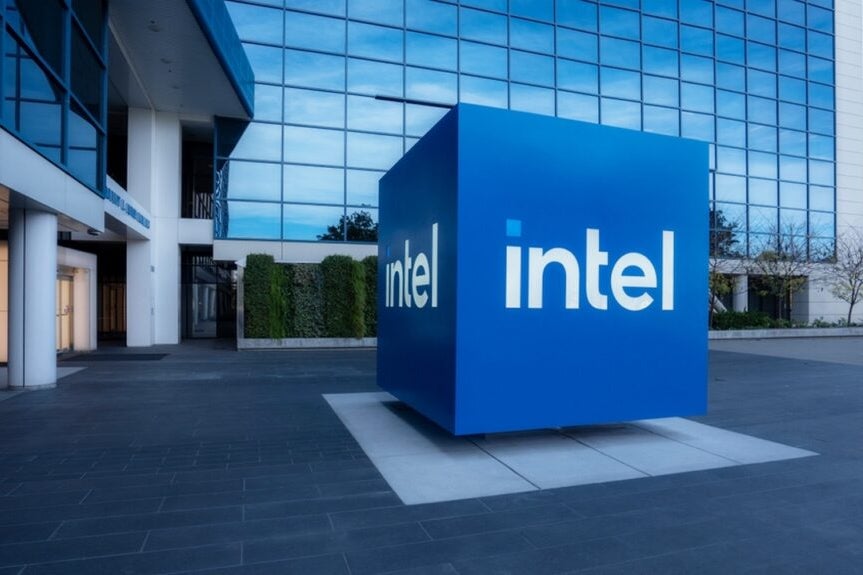Intel’s Future in Flux: Are Major Deals on the Horizon?
In the ever-changing landscape of the semiconductor industry, Intel’s future stands at a crossroads, particularly as major players like Broadcom and TSMC contemplate strategic partnerships. The implications of these potential alliances could have profound effects on Intel’s market positioning and operational strategies. Meanwhile, the regulatory environment, particularly the Trump administration’s stance on foreign ownership, adds layers of complexity to the unfolding narrative. As these dynamics evolve, it’s crucial to analyze Intel’s trajectory and the broader implications for the tech sector.
Understanding the Current Landscape
Intel, once the undisputed leader in microprocessor manufacturing, faces increasing competition from both established and emerging players. The rise of companies like AMD and NVIDIA has eroded Intel’s market share in recent years, prompting the need for strategic pivots. Concurrently, the semiconductor industry is witnessing a wave of consolidation, with companies like Broadcom and TSMC exploring potential mergers and partnerships that could reshape the competitive landscape.
The Role of Broadcom and TSMC
Broadcom and TSMC are two titans in the semiconductor industry, each with unique strengths that could complement Intel’s offerings. Broadcom is known for its diverse product portfolio, ranging from networking solutions to broadband technologies, while TSMC (Taiwan Semiconductor Manufacturing Company) is a leader in advanced chip fabrication. Their potential partnerships could lead to enhanced technological capabilities, improved supply chains, and increased market share.
- Broadcom’s Expansion: Broadcom is actively seeking to expand its footprint in the semiconductor space, especially in 5G and AI technologies.
- TSMC’s Innovation: TSMC continues to push the envelope with cutting-edge manufacturing technologies, particularly in chip miniaturization and performance enhancement.
If a partnership between these entities materializes, it could create formidable competition for Intel, prompting the tech giant to reassess its strategies and alliances.
The Impact of Political Dynamics
The regulatory landscape is another critical factor influencing Intel’s future. The Trump administration’s policies on foreign ownership and technology transfer have created a challenging environment for American tech companies. These policies are designed to protect national interests but can also stifle innovation and collaboration.
For Intel, navigating these regulations is essential. The company’s ability to engage with international partners, like TSMC, could be hampered by stringent foreign ownership laws. This situation raises several questions:
- How will Intel adapt to the changing regulatory environment?
- Can Intel secure beneficial partnerships without facing governmental hurdles?
- What strategies can Intel employ to maintain its competitive edge amidst these challenges?
Intel’s Strategic Options
As Intel contemplates its future, several strategic options are available:
- Investing in R&D: To regain its competitive edge, Intel must significantly ramp up its research and development efforts to innovate and improve its product offerings.
- Forming Alliances: Collaborating with other tech firms, including potential partnerships with Broadcom or TSMC, could enhance Intel’s capabilities and market presence.
- Expanding Manufacturing: Investing in new manufacturing facilities, particularly in the U.S., could alleviate supply chain issues and reinforce Intel’s commitment to national interests.
Each of these options presents both opportunities and challenges, and Intel must carefully weigh its choices as it moves forward.
The Future of Semiconductor Industry Dynamics
The semiconductor industry is in a state of flux, driven by technological advancements, shifting consumer demands, and geopolitical influences. As Intel navigates this complex landscape, the company must remain agile and responsive to emerging trends.
The Rise of AI and Machine Learning
One of the most significant trends shaping the semiconductor industry is the increasing demand for AI and machine learning capabilities. Companies across various sectors are leveraging these technologies to enhance efficiency, improve decision-making, and create innovative products. Intel’s ability to capitalize on this trend will be crucial for its future success.
- Developing AI-Specific Chips: Intel could focus on creating specialized chips tailored for AI applications, competing directly with NVIDIA.
- Investing in AI Startups: By investing in AI startups, Intel can gain insights into emerging technologies and trends, fostering innovation.
As AI continues to permeate various industries, Intel’s strategic moves in this arena will likely define its relevance and competitiveness in the tech ecosystem.
Conclusion: Intel’s Path Forward
Intel’s future is indeed in flux, influenced by potential partnerships involving Broadcom and TSMC, as well as the complexities introduced by political and regulatory factors. The company’s ability to navigate these challenges and capitalize on emerging opportunities will determine its trajectory in the semiconductor landscape.
As the industry evolves, Intel must embrace innovation, foster strategic alliances, and adapt to the changing regulatory environment. By doing so, Intel can not only secure its position in the market but also contribute to the broader technological advancements that shape our world.
In summary, while uncertainties loom over Intel’s future, the potential for major deals and strategic partnerships presents an opportunity for the company to redefine itself and emerge stronger in the competitive tech landscape. The next few years will be pivotal, and stakeholders will be watching closely as Intel charts its path forward.
See more Future Tech Daily

